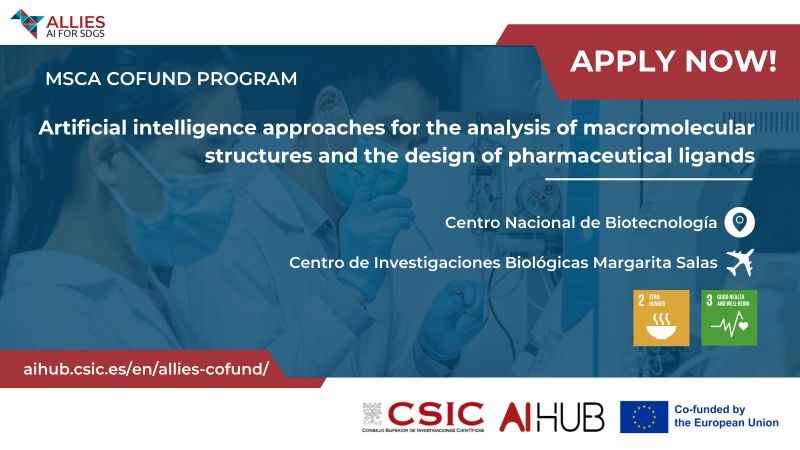What we are looking for:
We are looking for PhDs in engineering, physics, mathematics, computing science or any related scientific domain with a strong will to apply the AI methods to Structural Biology and Drug Screening. Knowledge of Python and Deep learning libraries are a must. Previous knowledge of Bioinformatics or Biology is highly appreciated, although not compulsory. The Postdoc must propose a research proposal aligned to the presented challenge.
The context:
Structural biology is key to understanding biological macromolecules like proteins and nucleic acids, crucial for biological functions and diseases. Cryo-electron microscopy (cryoEM) revolutionizes this field by visualizing macromolecules at near-atomic resolution, facilitating their study in native states. Simultaneously, computational prediction of ligand binding is vital for drug discovery, helping identify therapeutic candidates by how they interact with biomolecules. The synergy of AI tools for cryoEM and ligand prediction accelerates understanding biological systems and developing new treatments.
The problem to address:
The journey from pixelated snapshots to precise atomic models is fraught with computational hurdles, requiring a blend of innovative AI techniques and a deep understanding of molecular landscapes. Parallel to this endeavor is the quest to discover ligands that snugly fit into these newly revealed structures, a critical step in the design of new drugs. This challenge involves sifting through vast chemical libraries to find those rare molecules that can bind with high affinity to target sites on the macromolecule.
Objectives:
- Elucidating the complex structures of biological macromolecules from CryoEM images.
- Discover ligands that fit into the structures revealed for new drug design.
Expected Outcomes:
- Robust algorithms and workflows to tackle both problems.

